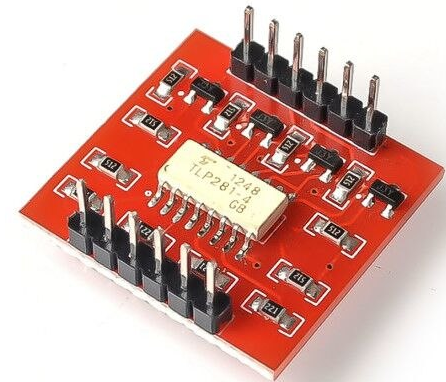I'm looking for a Normally-Open optocoupler board for arduino. I need to control power of a device (DC 12v, 500mA). I tried to use TLP281 board, which works, except that it inverts the output: device is powered when there is no control signal (i.e., it is Normally-Closed).
For this reason, the TLP281 board is not useful in my project.
This is picture and schematics for TLP281 board:
I need an optoisolator board which works analogous to normally open mechanical relay: when there is no signal, device must not be powered; and when there is signal, device must be powered.
NOTE: workaround by inverting the control signal in microcontroller firmware is not permitted, as the device must not be powered when microcontroller is off




